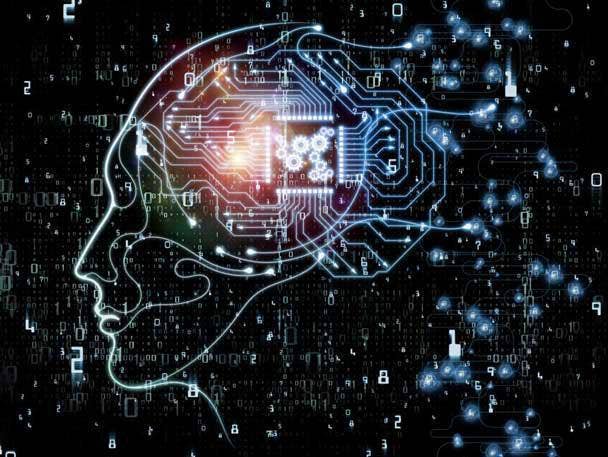HPE CEO Antonio Neri On Dell’s ‘Cultural’ And ‘Trust’ Channel Challenge
Hewlett Packard Enterprise CEO Antonio Neri tells CRN that rival Dell Technologies’ new partner-led storage strategy poses a ‘cultural’ and ‘trust’ channel challenge that is in sharp contrast to HPE’s “decades” long standing channel commitment.

HPE CEO Antonio Neri: ‘It Comes Down To Trust’
Hewlett Packard Enterprise CEO Antonio Neri told CRN that rival Dell Technologies’ new partner-led storage strategy poses a “cultural” and “trust” channel challenge that is in sharp contrast to HPE’s “decades” long standing channel commitment.
“We have been doing this for decades,” said Neri when asked about the differences between HPE and Dell’s new partner-led storage strategy that pays Dell direct reps more for storage sales that go through partners. “I am not sure what is the novelty of this. I guess they are just realizing that the channel plays a massive role. But it is a cultural shift for them. So they have to understand how to operate with the channel, what the economics are, how the sales forces on both sides work together. And honestly it comes down to trust.”
[ Related: CEO Antonio Neri: HPE Is Seeing A ‘Wave’ Of AI Acceleration]
Neri said he is especially “proud” of HPE’s longstanding channel commitment. “For me, one area that I am really proud of is we have built trust and relationships with the channel for decades,” he said. “You will see over time we continue to refine that model, which is already a market leader, in order to attract the entire partner ecosystem: distributors, resellers, MSPs, Super VARs and the like.”
Neri also pointed out that Dell’s storage-led strategy does not include server sales. In fact, he said that difference in the go-to-market route between storage and servers had him “scratching” his head. “Why just storage?” he asked. “What about compute? What exactly is it? I don’t understand it.”
As for the difference between HPE’s storage portfolio and the Dell storage lineup, Neri said HPE’s cloud-native, software-defined storage strategy that encompasses all types of data, including block and file, is a big differentiator.
“We conceived the vision of that business to drive one simple solution that is cloud-native and software-defined – no matter what type of data you need to manage,” he said. “That to me is a big differentiation compared to the portfolio Dell has, which has different solutions for different types of primary storage data services. So for customers choosing HPE, there is a Capex and an Opex reduction with a consistent experience, whether it is block, file or object over time. So that is a major point of differentiation, and the infrastructure that sits underneath is a standard infrastructure.”
Dell President of Sales and Customer Operations Bill Scannell has called the new “partner-first strategy for storage” the “biggest change ever” in Dell’s go-to-market model. It includes PowerMax, PowerFlex, PowerStore, PowerScale as well as hyperconverged and converged products, security storage products.
Dell Technologies also confirmed that it will cut jobs among its core sales teams as it adopts the new partner-led go-to-market model.
Pat O’Dell, managing partner for CPP Associates, Clinton, N.J., which was recently named HPE GreenLake North America Partner of the Year, said the new partner-led Dell storage channel strategy is a “competitive parry” that simply cannot match HPE’s long-standing channel commitment or the comprehensiveness of the HPE product portfolio.
“At the end of the day you have to give Dell credit for a channel-savvy move, making it more financially attractive for their reps on storage that goes through the channel,” he said. “That is a good thing, but it doesn’t outweigh the comprehensiveness of the HPE portfolio.”
“HPE has a huge competitive advantage with GreenLake and the AI investments,” he said. “HPE does not sell me-too solutions. It is differentiated. That differentiation makes all the difference in the world to HPE partners.”
C.R. Howdyshell, CEO of Advizex, Independence, Ohio, a Fulcrum IT Partners company and a top HPE and Dell partner, said he is glad to see both HPE and Dell step up to drive more sales through the channel.
“It’s great to see our top two OEMs realizing the importance of teaming with solution providers with elite technical teams that are bringing continued value to customers,” he said. “This is a great time to be a solution provider in this business.”
Here is an edited transcript of the discussion with Neri.

Talk about how you saw the edge, hybrid cloud and AI story playing out in the quarterly results, particularly the robust intelligent edge results.
We posted a solid quarter with continued revenue growth, which was up 3.5 percent, and gross margin expansion, which was up 120 basis points. The reason why that is the case is because we continue to drive our portfolio mix shift to high growth, higher gross margin areas.
You saw the performance at the edge. The edge business is absolutely stellar. It is exceptional. That business grew 53 percent. We expanded gross margin by 1,320 basis points.
Obviously that [intelligent edge] business now represents a big chunk of our total company revenue – up 20 percent. It now accounts for 49 percent of the company’s profit.
The first message for partners is: if you are not adopting and selling our edge solutions you are a laggard. Clearly the market momentum is there. The good news is that we continue to see partners adopting our edge portfolio because 95 percent of our business at the edge goes through the partner community which is higher than the 70 percent company average.
The other key message is we saw demand improve sequentially across all key segments of our business. Obviously that was driven by the significant acceleration in AI and HPE GreenLake.
AI was the key driver for our as-a-service order growth of 122 percent because most of that business now gets consumed in a GreenLake-as-a-service model.
We exited the quarter with the largest ever order book in HPC (high performance compute) and AI. We had a massive amount of wins we started talking about at the end of Q2 and HPE Discover. I pointed out specific customers [that bought HPE AI solutions]. I covered a few of them but I could go on for an hour. We wanted to show the type of customers, whether it is start ups, enterprise or the like.
That largest ever HPC and AI order book also fueled our total company order book which is now 2x pre-pandemic levels. That’s also because all our other businesses also improved. Sequentially we saw order growth in compute, edge and storage.
When you bring it back to compute and storage, we saw signs of stabilization in compute. Unit demand improved and obviously we see that through the channel.
With storage it was the second consecutive quarter that demand improved. Within that demand improvement we saw triple-digit growth in Alletra, and channel is a big driver of that. We still need to put that in place through the channel in the higher end of the customer segment – not just in commercial, midmarket and SMB. Obviously GreenLake continued to be a driving force through the channel.
You bring it all together with our first three quarters and that compelled us to raise our guidance again on a Non-GAAP diluted net earnings per share. Obviously we reaffirmed revenue, free cash glow, GAAP and operating profit.
When you look at it that takes a lot of hard work. If you follow me as a CEO, I have been very consistent. We said edge was a big opportunity [five years ago when I pledged $4 billion to accelerate intelligent edge innovation]. Now it is 20 percent of the company’s revenue and 50 percent of the profit.
GreenLake is a $12 billion total contract value business to the balance sheet that we are unwinding.
Now we have this third string of growth called AI. Our job is to democratize AI so every enterprise can have access to it. And the channel can obviously sell it as part of GreenLake.

Is the AI market demand growing faster than you thought when you look at the deals you are booking?
You need to step back and look at this from a market basis and then our position in that market. From a market perspective, the hype is stabilizing a little bit. In the first six, seven and eight months, there was a lot of hype. Customer are becoming smarter about [AI] and how and where they are going to use it. The interest is super high as we speak.
HPE as a company has a unique place in that market because we have a complete AI lifecycle portfolio, from training to tuning to inference. We are very large in training and tuning. And obviously by default we are going to be a big player in AI inferencing because these [AI] models, once they get trained and tuned, they will be scaled down to be deployed in something that is consumable somewhere. All our solutions will be architected to be delivered through GreenLake, whether you train them in our AI public cloud or tune them with the foundational models we make available to tune your data, or whether you deploy a Gen 11 ProLiant DL380A, which is an inference device with eight GPUs from Nvidia. It will be managed by GreenLake – no differently than any other cloud instance. So you have a continuum.
If I am a company that develops [AI] models I could train it on the HPE cloud. If I don’t have the expertise to train the model I may want to take a model like CFD (computational fluid dynamcis) and tune it with my data in an [HPE] private cloud in a responsible and secure way.
When I feel ready to go, I will be able to scale and put it in one of these [HPE] inference devices where ever the data is being collected so we can deliver the outcome from that model. We manage all of that.
The relevancy for the partners is that they can get all three of these [AI solutions] through the same platform – GreenLake, versus ‘I am going to there for that and there for that.’ That is kind of a disjointed solution. And remember, our approach is an open ecosystem of suppliers. Then with our unique IP we can offer different types of solutions, which is a benefit for partners because obviously in the short term with AI we are going to deal with some supply challenges. That [supply challenge] is with AI specifically, not in the rest of the business.
So is the message for partners to go all in on HPE GreenLake software and services to play in the AI market?
Exactly. Once you get on GreenLake, take advantage of the edge, which is exploding as you saw in our numbers. Build hybrid cloud solutions from HPE GreenLake, whether it is private cloud or the full stack of compute and storage not connected to GreenLake, and more software and services – call it SaaS- and then AI comes with it. It comes with it! It is an extension of what we have, and you are going to be able to do it through the same [GreenLake] platform.

Why are intelligent edge sales soaring, and what is the difference between HPE Aruba and Cisco Meraki?
This is now five consecutive quarters of record breaking revenue [for the intelligent edge business]. It is not a coincidence. It is the outcome of many things we have done since 2018. We have made large investments that are now paying off.
Obviously we have been very strong in campus and branch through wireless and switching. We expanded campus and branch with SD-WAN. We expanded campus and branch into data center networking.
We added 5G core and private 5G and we added security. So we keep adding capabilities to the same platform. Therefore it is easier for customers in a SaaS model to add and consume those services and then drag along the infrastructure that comes with it.
That is why to me it is obviously not a surprise. But it is definitely momentum we have built over a number of quarters. And that is the difference between us and the other competitors that may have multiple offers in the same customer segment, so like Cisco DNA or Meraki or maybe one is in the data center and the other one is in the branch.
We have a complete offering for customers who don’t have the time to bring all this stuff together. They just want to deploy a service that works for them at the speed that the business demands.

How do you see this Intelligent Edge business developing in terms of a total percentage of sales?
It is hard to predict percentage wise. It is not like I am running to a percentage. I want all of them to grow as fast as possible, including the core. But over time we are very intentional with where we make our investments.
Remember what I said in 2018: the enterprise of the future will be edge-centric, cloud-enabled and data-driven. Boy, we were right! With edge-centric, you need a connectivity layer to drive data-first digital transformations. That is paying off. With cloud-enabled, the world is hybrid, and GreenLake is showing the momentum we have there with $12 billion in total contract value [and] is very significant. And then all of our innovation. I talked about all the innovation we have brought to the market in the last few months.
With data-driven, did I understand in 2018 there would be a big explosion of AI? No. But it is definitely data-driven because AI is all about data. That is why it is a natural evolution for us to now invest and grow in a space where we have the right to play and win. It is an opportunity. But not as a widget or as a siloed solution, but as an integrated experience of HPE GreenLake, which is the North Star for everything we do.

Dell recently announced it is moving to a partner-led storage strategy, paying their direct sales reps more to move storage through the channel. What is the biggest difference between HPE and Dell in terms of both storage product and channel strategy?
Let’s start with the product. Obviously our Alletra product growth is pretty strong. It is growing by triple digits. How we conceived the vision of that business is to drive one simple solution that is cloud-native and software-defined – no matter what type of data you need to manage. That to me is a big differentiation compared to the portfolio Dell has, which has different solutions for different types of primary storage data services. So for customers choosing HPE, there is a Capex and an Opex reduction with a consistent experience, whether it is block, file or object over time. So that is a major point of differentiation, and the infrastructure that sits underneath is a standard infrastructure.
On the route to market, we have been doing this for decades. I am not sure what is the novelty of this. I guess they are just realizing that the channel plays a massive role. But it is a cultural shift for them. So they have to understand how to operate with the channel, what the economics are, how the sales forces on both sides work together. And honestly, it comes down to trust.
For me, one area that I am really proud of is we have built trust and relationships with the channel for decades. You will see over time we continue to refine that model, which is already a market leader, in order to attract the entire partner ecosystem: distributors, resellers, MSPs, Super VARs and the like.
The other thing that had me scratching my head was: why just storage? What about compute? What exactly is it? I don’t understand it.
Listen, they have to do what they have to do. I am focused on us. Consistency matters, trust matters and execution matters. And we have been on that path for some time.